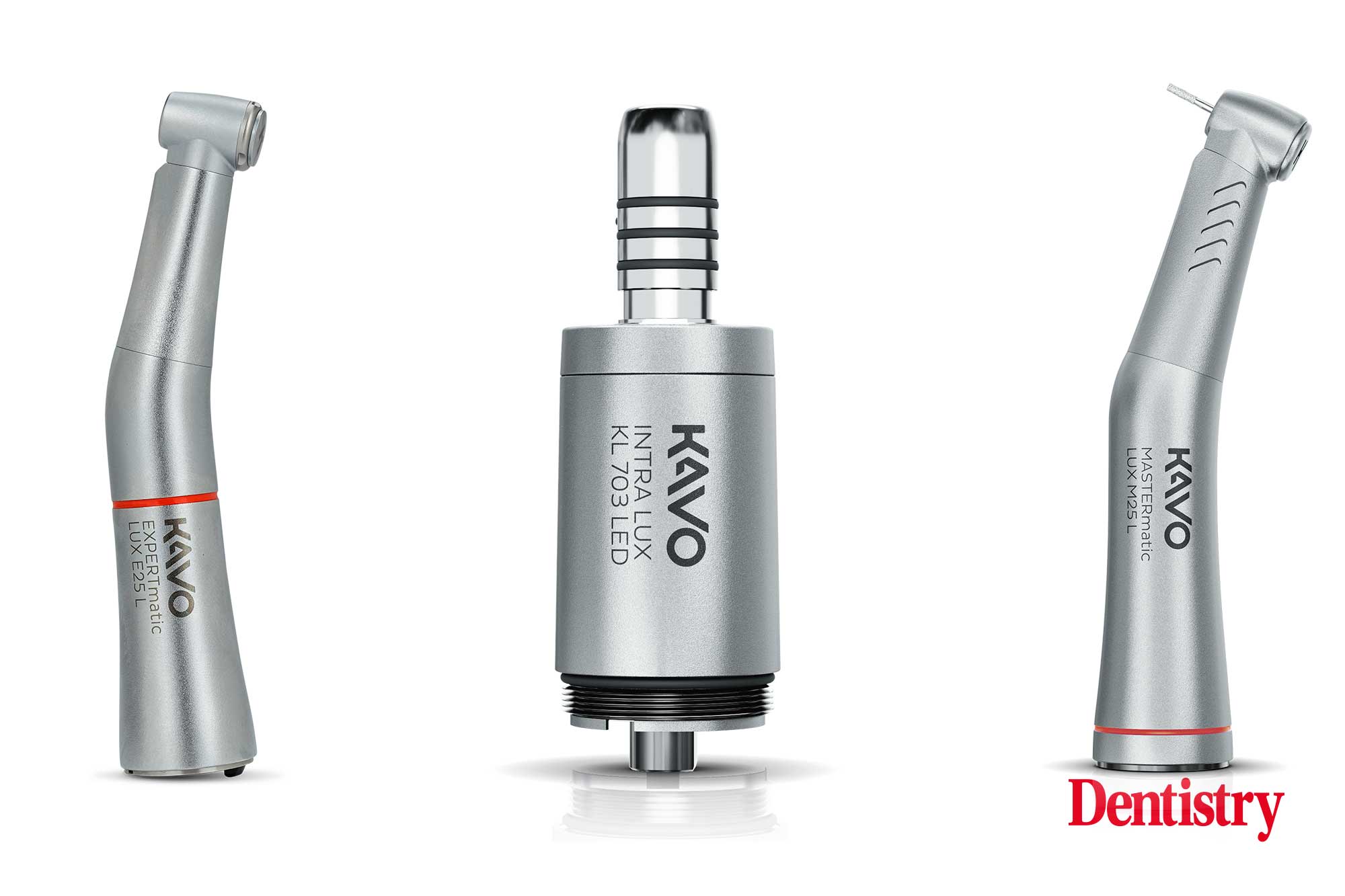
The pandemic forced dentists to reconsider regular ways of working, writes Don Gilchrist, Regional Manager at Kavo UK & Ireland.
One of which was the continual use of the high-speed handpiece due to its high AGP (aerosol generating procedure) output at upwards of 60,000 rpm.
The speed increasing handpiece, which can run at 40,000 rpm but with greater torque control than a turbine, was a welcome alternative. But that’s just the beginning: the advantages of the speed increasing handpiece go way beyond crises management.
The UK dental market shares a love of the high-speed turbine with the USA. NHS lists, as well as the ‘drill & fill’ mentality of yesteryear, helped embed the turbine as one of our most trusted tools of the trade.
Over on the continent, meanwhile, the turbine has more limited popularity and instead it’s the versatile contra angle handpieces, particularly the speed increasing options, taking centre stage in the practice.
Now that the UK dental market focuses more on restorative dentistry (61% of all general practices) and as we begin to treat more patients on a private basis (back in January, 84% of dentists reported that they were planning to do more private work throughout 2022), the speed increasing handpiece is the go-to device to have on-hand, taking on everything the turbine can do and more.
The speed increasing handpiece – standard models perform at a ratio of 1:5, so if your motor is running at 40,000 rpm then the speed of the handpiece can go up x 5 to 200,000 rpm – is designed for a wide range of applications.
As well as the heavy-lifting work of a turbine when used at the highest speed, you’ve also got the option to work powerfully at much slower speeds, for those situations where precision finishing and / or preparation are key.
Customers often quote the analogy of a speed increasing handpiece cutting through crowns, bridges and tooth structure “like a hot knife through butter” when they’ve used Kavo’s Expertmatic E25L or Mastermatic M25L.
In favour of flexibility
Some UK dentists are already converts to the power and versatility of a speed increasing handpiece. Whereas with a turbine it’s all or nothing, when doing the margins of crown preps, for example, with a speed increasing handpiece there’s a lot more tactile feedback.
This allows the margins to be finessed and because the motors are torque compensated, as pressure is applied to the area the motor senses that and keeps the bur turning, even under load.
As Dr Zuber Bagasi, CEO and Founder of Synergy Dental Group, says: ‘Having used speed increasing handpieces for more than 15 years now, it’s fair to say that we would not revert back to air motors for any of our group practices. All our joint venture partners also see the value in having electric micro motors for use with speed increasing handpieces.’
The Electric Micro Motor and its essential role in the use of the speed increasing handpiece
The speed increasing handpiece has gears to work through, from its role as an alternative to the turbine, to its role in smoothing and finishing. These gear changes are only possible with the right power source behind it – an electric motor.
Air motors are simply not up to the job here. A good electric micro motor means the speed increasing handpiece can perform to the best of its ability.
As an example, Kavo’s KL703LED motor is not only powerful but also 30% lighter and 25% smaller than its predecessor – designed by Kavo to be as ergonomic as possible and not cause strain or fatigue for the operator.
The Kavo KL703LED motor provides constant torque over the entire speed range (2,000 rpm to 40,000 rpm with a standard motor), with optimised comfort and power built into the design. The range, power and control eliminate the need for a separate endo motor – so your options are, again, optimised with just one component.
Dr. Bagasi goes on to say: ‘There are many benefits to the micro motor – for example, it maintains a constant speed and torque during tooth preparations which avoids unforeseen stalls and speed variations during these preparations.
‘Clinically it means that our clinicians are able to produce the highest quality preparations with superior precision which directly benefits and improves the long-term health for both direct and indirect restorations.’
The Kavo KL703LED motor comes as standard with Kavo’s treatment units. There’s also a solution if you don’t have a Kavo chair – the Kavo Electromatic unit.
Integrated air-to-electric conversion
Kavo’s Electromatic unit is an air-to-electric motor conversion kit for any treatment unit and allows the dentist to upgrade to an electric motor and all its advantages within minutes, thanks to its ease of installation.
It can be fully integrated to the existing unit, incorporating a display panel for full visibility and control. This means that you’re getting the most out of the equipment you’re using, right up to the last and, arguably, most vital link in the chain – the handpiece – and means your work is done as effectively and efficiently as possible.
The speed increasing handpiece is testament to the fact that often it’s the smallest things that make the biggest difference.
For more information, visit www.kavo.com/en-uk.


